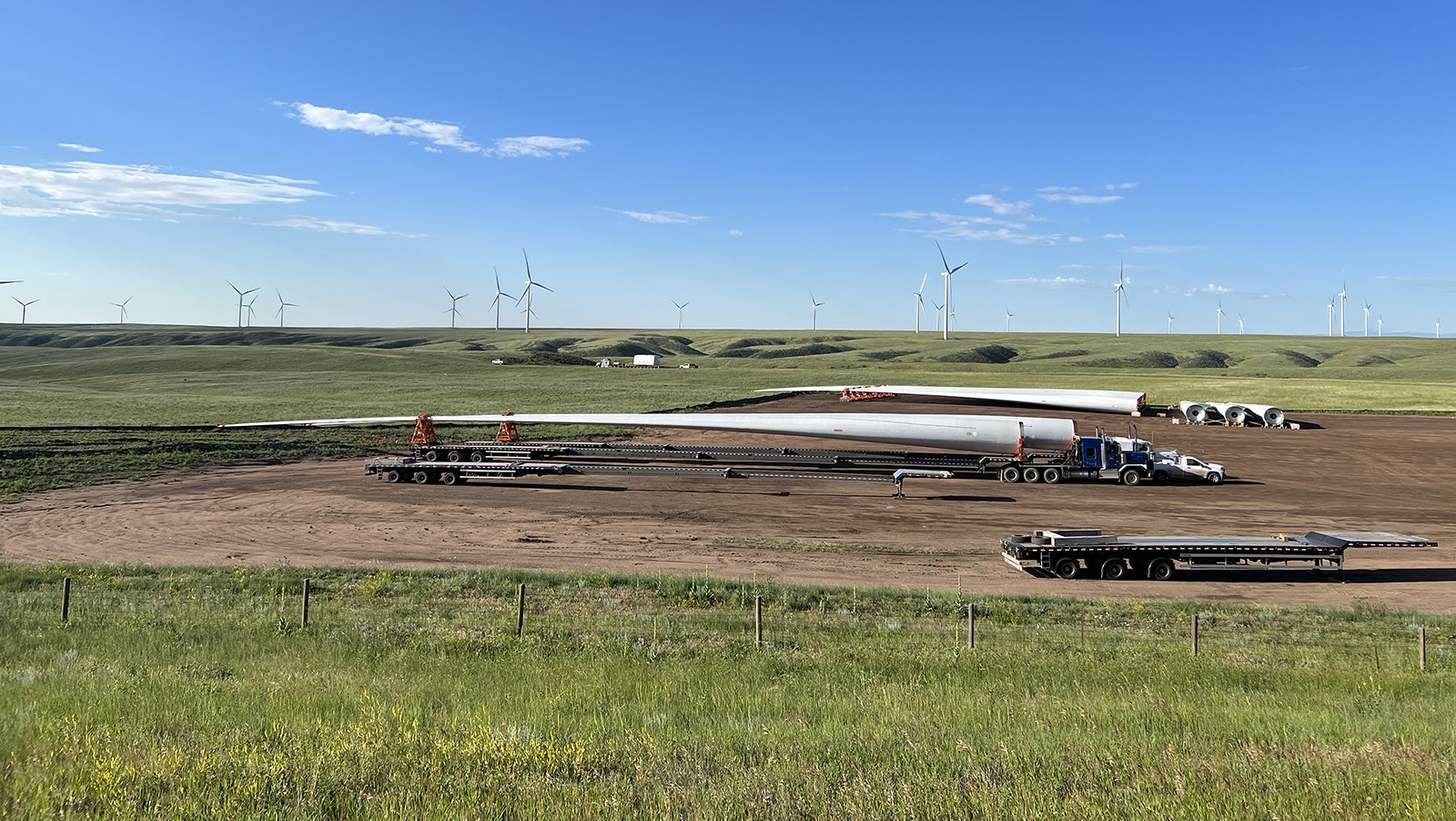The Canadian province of Alberta has placed a moratorium on large wind projects until February. The goal is to give the provincial government time to study how wind developments impact the electrical grid, the environment and the province’s natural landscape.
It’s a move some people think Wyoming should consider.
Sen. Cale Case, R-Lander, told Cowboy State Daily that the state should take some time to make sure Wyoming has sound policies in place to protect residents from long-term damage.
A permit from the Bureau of Land Management (BLM) may secure the site for a few decades, he said, but once the towers are built, they’re likely there for a lot longer.
“Does anyone in their right mind think that in 40 years they’re going to take them all down?” Case said.
Rural Similarities
Alberta has a few things in common with Wyoming.
Its oil sands are the fourth-largest oil reserve in the world, and so its economy is heavily reliant on fossil fuels. An environmentally friendly federal government, however, pushes the province to eliminate those lucrative industries and replace it with wind farms, which eat up a lot of untouched rural lands across the province.
A representative of the wind industry told The Wall Street Journal that the moratorium places 80 projects at risk, which are valued at about $15 billion.
The industry is not happy about the decision, as well as many journalists.
A Guardian reporter claimed the move would make the “climate crisis” worse as the country “struggles with its worst wildfire season on record.”
How a six-month pause on wind development would have any measurable impact on carbon dioxide emissions, the reporter doesn’t explain.
Writing on his substack, Roger Pilelke Jr., professor of environmental studies at the University of Colorado at Boulder, explains that contrary to media reports, Canada has not seen any increase in fire activity in recent decades.
Red, Blinking Lights
Tyler Lawson, whose family ranches in northern Albany county, told Cowboy State Daily that he’s seen the Wyoming landscape rapidly change from all the wind development in recent years.
A former helicopter pilot, he used to fly at night from Cheyenne over the other side of the Laramie Range, and said the landscape was covered in darkness. Then, little by little, the red lights flashing from the wind towers started showing up.
“Now the whole horizon lights up with red, blinking lights. It’s really kind of sad to see,” Lawson said.
Lawson said he’s fully supportive of property rights and doesn’t want to take those away from people. But he’s concerned with how these tall wind towers impact the landscape.
It’s likely disappointing for people who have bought land in southeast Wyoming in the past several years to find that their open views are slowly eroded away as rural Wyoming is industrialized, he said.
Eagle Deaths
Jim Wiegand, an independent wildlife expert with decades of field observations and analytical work, has been studying the impacts on eagles from all the wind developments in California.
He told Cowboy State Daily that wind companies are downplaying the impacts to eagle populations that wind farms are having.
“There’s a lot of killing that doesn’t get reported,” he said.
Wiegand said that California used to have several thousand golden eagles, but that population has been reduced to a few hundred.
“The eagles are in danger here, and it’s being covered up,” Wieland said.
Mike Lockhart, a wildlife biologist specializing in eagles in Wyoming, told Cowboy State Daily in February that the same thing is happening here. Lockhart worked for the U.S. Fish and Wildlife Service for over 30 years, and said the agency is underestimating the number of eagles killed every year by spinning wind turbine blades.
Where these projects are being sited is in a migration corridor, which makes it among the worst places to site wind farms, Lockhart said.
Public Involvement
Lockhart, along with the Albany County Conservancy, filed a lawsuit against the BLM for failing to include public notification and participation in the approval of transmission lines supporting wind projects in the state.
Ken Lay, a resident of Converse County, told Cowboy State Daily that public notification for the state-level processes is severely lacking to the point that people either don’t know a project is planned, or by the time they are aware of a developer’s intentions, it’s too late to provide their input.
Lay said that he would “strongly support” a moratorium like that in Alberta, to give the state time to study the full range impacts of all the wind development in Wyoming on the environment, wildlife, the untouched rural landscape and the state’s economy.
“I think a pause is more than appropriate, and in many respects, it’s long overdue, given the intensity of this development over the last decade,” Lay said.
Economic Impacts
Lawson said he’s also concerned if it makes any economic sense to put up massive amounts of steel and concrete to transport power from wherever the wind happens to be blowing at any given moment to where the energy demand is. A natural gas or nuclear power facility, on the other hand, takes up little land and needs far less transmission lines to support it.
Case said these impacts are never going to go away, which is all the more reason for Wyoming to take its time in permitting wind projects.
“People need to grasp that these are permanent decisions. It’s really irreversible, and so we need to have careful consideration upfront,” Case said.
With Rocky Mountain Power — Wyoming’s largest utility — requesting rate increases over 30%, he said, people are starting to realize that on top of all the other impacts, wind energy isn’t going to be cheap.
“It was supposed to be free, but free Energy is not free because of all the integration costs,” Case said.





